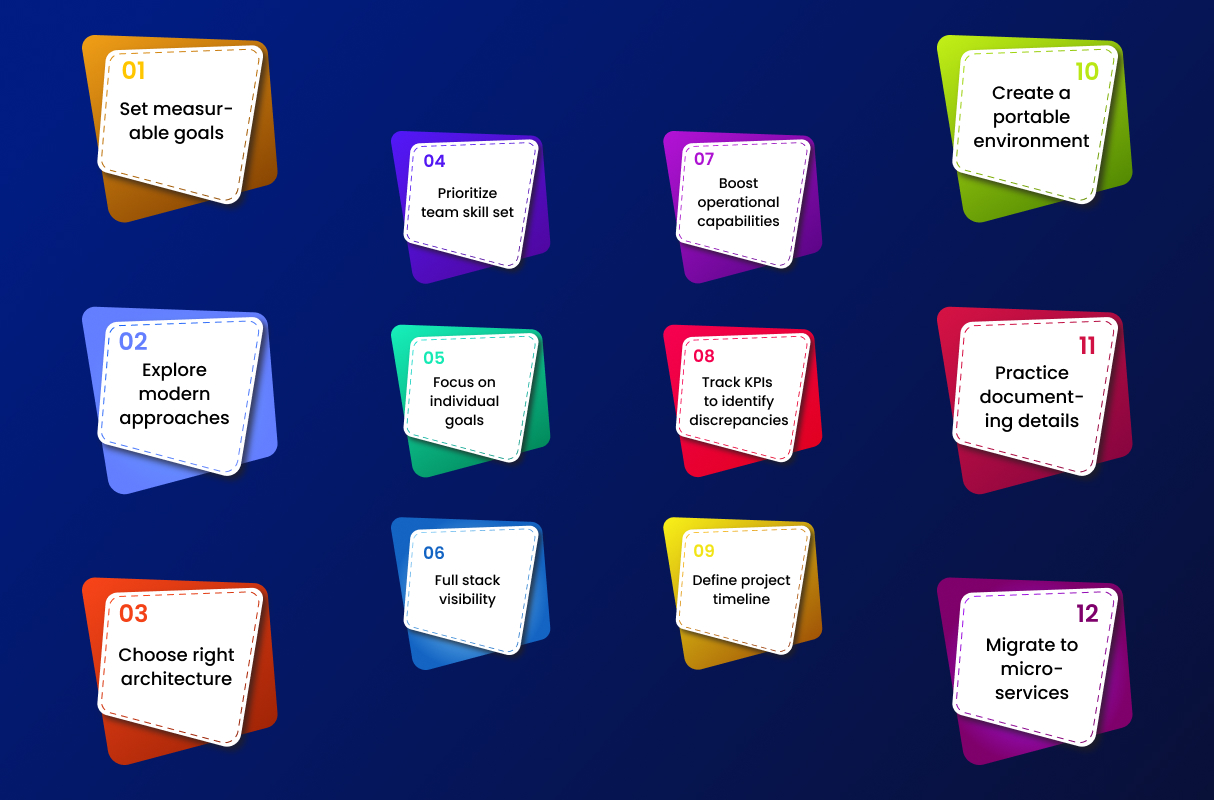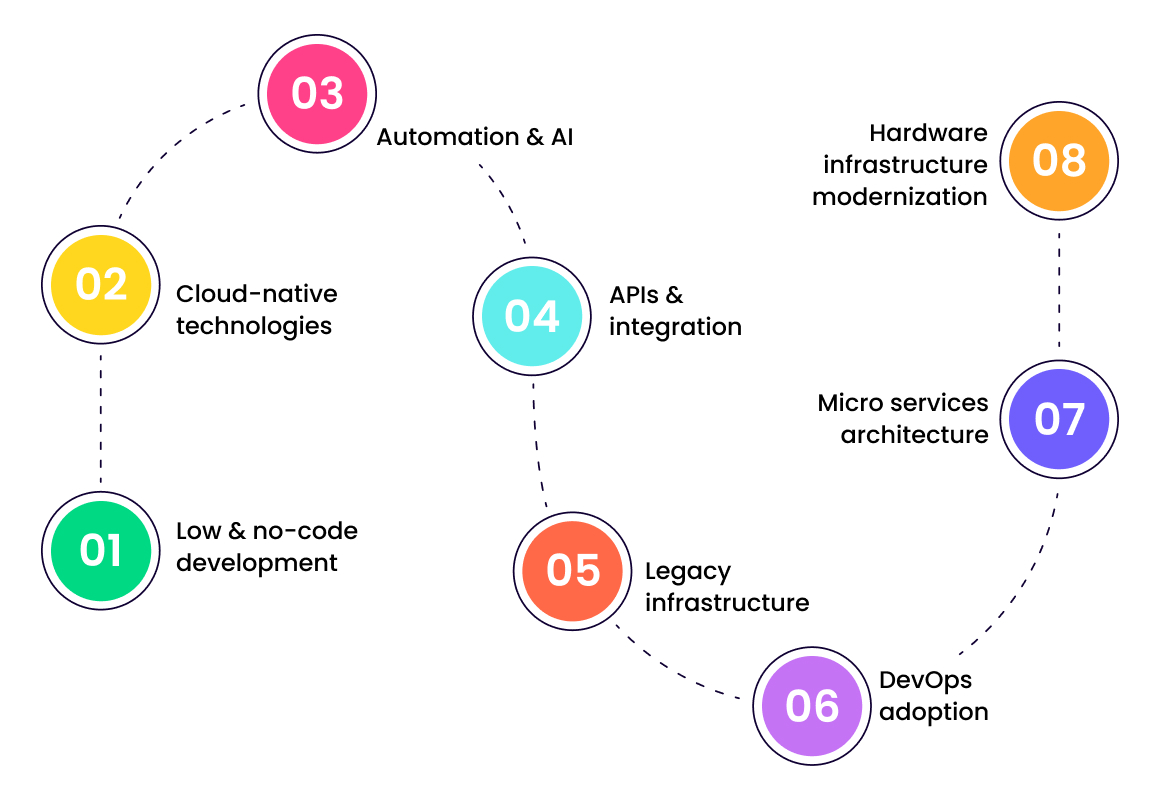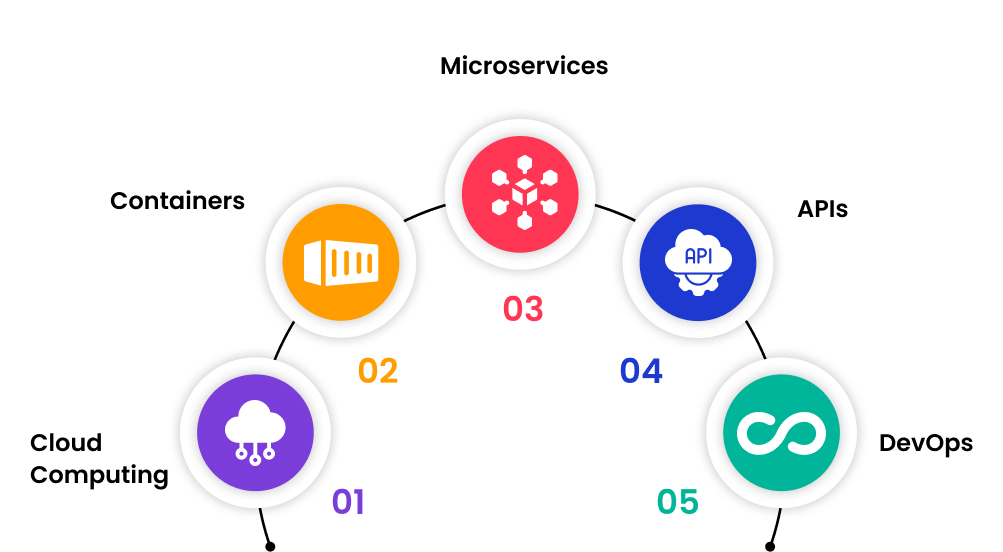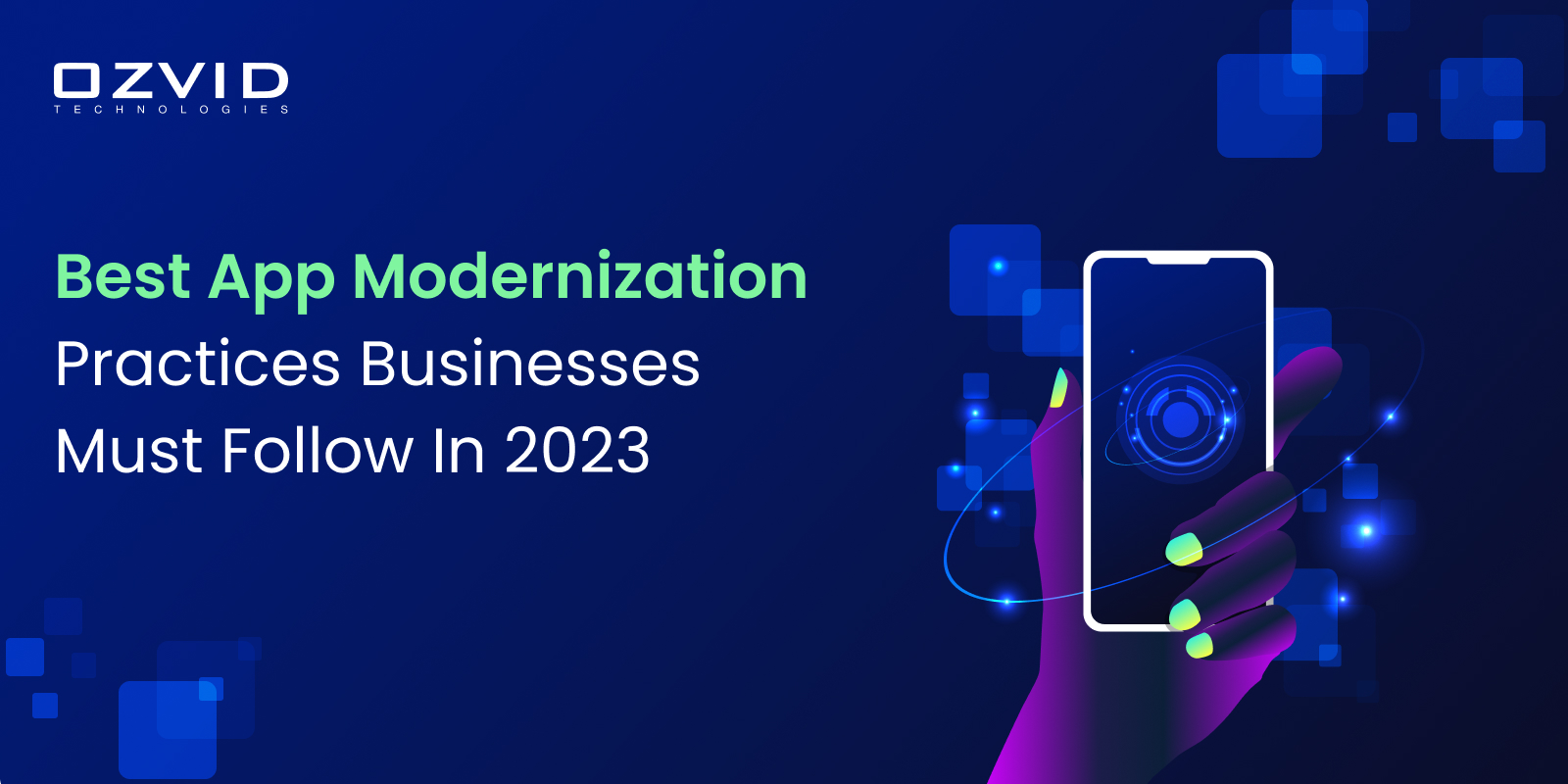As modern technology and the business market evolve, every industry must upgrade its existing processes and operational infrastructure. Many businesses, however, are focused on and prioritize outdated or legacy applications. But legacy apps or systems can result in significant losses and impede business growth and productivity. Such use of legacy apps or systems can result in substantial losses and limit the growth and productivity of businesses.
So what is the solution? Well, the only solution to avoid such incompetence is application modernization.
Why app modernization has become the need of the hour?
In today's world of digital transformation, legacy systems will only cause technical complexities in the long term. Moreover, legacy systems restrict your processes from using cloud services.
Businesses must understand that constant innovation and using secure services can help them grow. And, to keep up with modern technologies, it is crucial to migrate to cloud services. App modernization can make it easier for you to use technological innovations, including cloud computing. Moreover, it helps you unlock the potential opportunities that can help your business grow.
Here is why modernizing legacy apps has become the need of the hour.
- Increase team productivity while concentrating on core company strengths.
- Provide consistent service offerings and seamless user experiences.
- Improve business processes to meet desired operational targets.
- Avoid concerns related to scaling, performance, and other data security.
- Reduce the overhead costs associated with the app maintenance methods.
- Follow the most recent developments in software, releases, and innovations.
- Increase uptime by integrating the essential features and functionalities.
- Make that the intended platforms and devices are compatible as planned.
- Boost digital endeavors while maintaining total freedom and agility.
- Use SMAC (social, mobile, analytics, and cloud) technologies to their full potential.
The key application modernization best practices for business growth in 2023
Now that we know why modernization is essential, we can move forward to understand the most important practices that can help businesses transform their apps and generate revenue.

- Set measurable goals: Businesses must have an app modernization strategy that aligns with business objectives. For example, a smooth and visually appealing UI/UX can offer businesses a positive user experience. However, before setting business objectives, companies must finalize priorities and the applications they want to modernize. This help businesses analyze the impact of these changes and help them understand the scalability and reliability of the overall process.
- Explore modernization approaches: There are numerous modernization approaches, and some of them are: Encapsulation, rehosting, refactoring, re-architect, rebuilding, and replacing. Businesses can use any of these based on their requirements and ensure a smooth transition to modern technologies. For example, you can rebuild an app or its components from scratch without changing its scope. Moreover, you can rehost your app to more advanced infrastructure for better agility and scalability. You can also replace or remove the older features. Every app has its advantages, and you must choose the one that best fits your requirements.
- Define project timeline: Defining a proper timeline is one of the best app modernization practices. Businesses must know the key objectives, activities, and timeframes. Also, they should communicate with their teams, discuss the tasks and priorities, and helps them understand the required time needed to achieve their set milestone. To modernize projects businesses can use software such as ClickUp, Trello, Asana, ClickUp, JIRA, Basecamp, etc.
- Choose the right architecture: Choosing the right architecture plays a vital role in any software modernization, especially while replacing older software. The architecture determines whether or not the selected software is capable of multi-system integration and verifies scalability and security level. Additionally, you must ensure that the architecture is compatible with Cloud Computing, DevOps, DataOps, Agile, DevSecOps, and other automation processes.
- Prioritize team skill set: Right skills can help you grow your business and transform your company by deploying new applications. The presence of the correct skill set helps in focusing on the right strategies.
Businesses should check for best practices, such as evaluating existing and required skills. For this, they must analyze their team members and their capabilities. For example, a project manager is responsible for checking, assigning, tracking, and leading teams. Also, they must ensure that they have a skilled team of architects, DevOps engineers, software developers, UI/UX designers, QA experts, etc. Moreover, businesses always have the option to overcome skill requirements by hiring or extending the team with the required skill set.
- Focus on individual goals: Apps modernization is a difficult task mainly when businesses perform multiple tasks at once and redefine strategies. Moreover, doing modernization while working on multiple tasks can lead to potential risks and negatively impact your business in the long run. Hence it is a good practice to divide the tasks into smaller parts or tasks. Businesses can start by defragmenting the crucial elements, such as server needs, network and storage configuration, app deployment requirements, etc. After this businesses can plan the networking between each component, then disassemble it for various configurations. Businesses can implement plans to support legacy systems and maximize modernization efforts.
- Practice documenting details: Documenting every detail of app modernization can help businesses take their business to the next level. It plays a vital role in app maintenance and supports the business journey. The management teams must motivate the teams to document every detail from initiation, development, deployment, and launch. Documentation must cover all aspects of the development procedures such as IT files, programs, features/functionalists, processes, etc.
- Boost operational capabilities: The application modernization plan must focus on a quick delivery cycle. The updated plan must be able to reduce or lower the time to market the apps and offer fast turnaround times. To achieve this operations are powered by automation. The automation tasks involve data management, scheduling meetings, customer support, and more. Businesses can leverage DataOps practices to know more about data collection and delivery.
- Track KPIs to identify discrepancies: Best practices for modernizing applications, such as tracking performance measures, can help you uncover hidden gaps and work on their root cause. This ensures that the business produces the expected results. Some of the most important measures to take into consideration are response time, throughput, processor use, memory use, browsing time, and so on. These metrics help in real-time change management.
- Create a portable environment: Businesses must focus on understanding the portability of their legacy software. The higher the portability, the better the outcome. The legacy software modernization processes must be based on principles of apps such as The Twelve-Factor App. Such principles will help you host your app on Linux, or Windows hosts and help you migrate easily and quickly to the new environment.
- Full-stack visibility: System modernization is crucial, but these apps demand seamless communication with legacy systems. Another crucial factor to focus on is the visibility of apps across the system. Businesses can achieve that by following the app modernization best practices such as full-stack visibility. This helps you monitor the end user's perspective and allow you to identify ad remove their issues.
- Migrate to microservices: It is crucial to embrace application modernization for both hardware and software. And to achieve that, switching to a microservices architecture is a perfect strategy. It streamlines the development procedure and gets rid of all dependencies related to the monolithic approach. Switching to containers and microservices can increase the scalability and flexibility of the apps. While allowing you to make changes as needed, it helps in future-proofing. Also, another crucial factor to consider is rewriting COBOL code in more contemporary languages like C# or Java is an additional factor to take into consideration. Using the microservices method, which separates your app's operations can make the procedure simpler.
What are the top application modernization trends?
Before developing the app modernization roadmap, businesses must do a survey and know what others are doing to update or modernize their apps.

- Low and no-code development: Low-code or no-code development platforms are gaining popularity as they allow developers to create applications quickly, using a visual interface, without requiring extensive coding knowledge.
- Cloud-Native Technologies: Organizations are increasingly shifting towards cloud-native technologies for application modernization. This approach is conducted using containers, microservices, and serverless computing that helps organizations modernize their applications.
- Automation and AI: Automation and Artificial Intelligence (AI) are increasingly used for application modernization. These technologies can help organizations automate repetitive tasks, reduce human errors, and improve efficiency.
- DevOps Adoption: DevOps has become one of the most popular trends in recent years. Organizations are adopting DevOps practices to improve collaboration, reduce development cycles, and ensure faster time-to-market.
- APIs and Integration: APIs and integration are critical components of application modernization. They allow organizations to connect disparate systems, share data, and improve efficiency.
- Legacy Infrastructure: Many organizations still have legacy systems that are outdated and difficult to maintain. Hence, there is a growing demand for modernizing legacy systems to improve operational efficiency, reduce costs, and stay competitive.
- Microservices Architecture: Microservices architecture is a trend that is gaining popularity. It involves decomposing monolithic applications into small services that can develop and deploy independently. This approach enables organizations to be more agile and responsive to change.
- Hardware Infrastructure Modernization: Modernizing the hardware infrastructure helps businesses remove older systems. These systems are unreliable, slow, unstable, and less secure, as well as complex and expensive to scale. The advantages of a hybrid or cloud-based infrastructure are as follows:
- Better performance: New infrastructure can use cutting-edge CPUs with more memory and storage space, frequently at lower total costs.
- Scalability: Cloud-based infrastructure can be grown easily, especially with the help of widely available pay-as-you-go solutions (e.g., AWS products). During heavy traffic, it expands and changes its capacity as per business requirements.
- Delivery speed: Compared to outdated on-site legacy systems, modern hardware infrastructure enables teams to work parallelly and bring products to market much more quickly.
- Stability: Compared to outdated or legacy systems, modern hardware infrastructure is far more stable. It uses technology like CI/CD and automated monitoring to find problems more quickly.
- Security: Fully modern infrastructure is more secure than legacy systems and helps businesses grow securely.
What are the key technologies for application modernization?
There are numerous essential technologies for application modernization. Some of them are as follows:

- Cloud Computing: Cloud computing is a crucial technology for application modernization. It allows businesses to move their applications to the cloud. Moreover, it is cost-effective, scalability, and enhances business performance. Cloud computing can also offer greater agility, and flexibility to businesses and enable businesses to adapt the changing market conditions.
- Containers: Containers are becoming popular for modernizing applications. They offer a lightweight and efficient way to package applications and are easy to deploy and manage. They are scalable, ensuring that applications can quickly adapt to changing workloads.
- Microservices: Microservices follow an architectural pattern that enables developers to break large applications into smaller and more modular components. This approach can improve application performance, reduce complexity, and make it easier to scale systems.
- APIs: APIs are essential for modernizing applications, as they allow different systems, applications, and services to communicate. APIs integrate legacy systems, update monolithic applications, and build new distributed systems.
- DevOps: DevOps practices are vital for application modernization. DevOps combines development and operations teams to create a more streamlined and agile development process. This approach can accelerate application delivery, reduce downtime, and improve quality.
To conclude:
We have discussed the best practices that can help you modernize your applications. Modernization allows you to optimize existing apps without rebuilding them from scratch. So if you are looking for services that can update existing apps and enable you to amplify digital transformation, support cloud adoption, attract new business opportunities, and improve operational efficiency and standardization, contact OZVID Technologies. We have a team of well-versed developers who have helped businesses of all sizes modernize their apps and help them win the competition.






















































Share this post on: